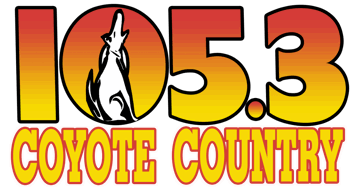Mid-America Manufacturing Indicates Little to No Growth

August 2025 Survey Highlights:
*The overall Mid-America Business Conditions Index continued to hover around growth neutral for the month.
*Employment losses occurred for the fifth straight month.
*Approximately 15% of firms reported that hiring had risen from July, compared to 10% of businesses that indicated that their firm had begun layoffs.
*The regional inflation yardstick moved into a range indicating that inflationary pressures are moving higher at the wholesale level.
*As reported by one supply manager, “We are starting to see the impact of tariffs on our bottom line.”
*Approximately four of five firms reported that tariffs were pushing import prices higher.
*According to U.S. International Trade Administration (ITA) data, the regional economy exported $46.5 billion in manufactured goods for the first half of 2025, compared to $49.3 billion for the same period in 2024, for a 5.7% decline.
OMAHA, Neb. (Sept. 2, 2025) — For the seventh time in 2025, the Creighton University Mid-America Business Conditions Index, a leading economic indicator for the nine-state region stretching from Minnesota to Arkansas, rose slightly above growth neutral in August.
Overall Index: The Business Conditions Index, which uses the identical methodology as the national Institute for Supply Management (ISM) and ranges between 0 and 100 with 50.0 representing growth neutral, climbed to 50.5 from 49.4 in July.
“Creighton’s latest survey continues to reflect job losses across the region, accompanied by elevated wholesale inflation,” said Ernie Goss, PhD, Director of Creighton University’s Economic Forecasting Group and the Jack A. MacAllister Chair in Regional Economics in the Heider College of Business. “Supply managers reported weakness in both imports and exports along with higher prices for imported goods.”
As reported by one supply manager in August, “We are starting to see the impact of tariffs on our bottom line.”
The Mid-America report is produced independently of the national ISM.
Employment: The August employment index increased slightly to a weak 45.6 from 45.4 in July, marking the fifth consecutive month below the growth-neutral threshold of 50. “This sustained weakness reflects ongoing labor market challenges in the regional manufacturing sector,” said Goss.
On the other hand, approximately 15% of firms reported in August that hiring had risen from July, compared to 10% of businesses that indicated that their firm had begun layoffs.
As reported by an August survey participant, “We have trouble filling positions because of the low unemployment (less than 2%) in our area.”
Comments from supply managers in August:
"Our layoffs have been self-inflicted due to a change in org structure.”
“Grain prices have a direct impact on our market and are of concern as bumper crops will only push prices south and lower net farm income."
“Quotes for products that would have been valid for 30 days now expired in seven.”
“While I understand the economy is by no means on solid footing as of yet, if the Trump administration had done nothing, we would be in an all-out recession by now due to Biden's poor policy decisions and anti-American stance on several levels.”
“It will be touch and go for the next year for this economy to adjust to the new policies, both domestic and globally.”
“The only real issues holding us back from rebounding faster are the continued obstructions from the liberals who are still reeling from TDS.”
Wholesale Prices: The August price gauge declined to 64.9 from 69.7 in July.
“The regional inflation yardstick has moved into a range indicating that inflationary pressures are moving higher at the wholesale level. However, due to slowing regional and U.S. economies, I expect the Federal Reserve to cut interest rates at its September 16-17 meetings,” said Goss.
“When asked about the impact of tariffs on prices for inputs purchased abroad, approximately four of five firms reported that tariffs were pushing import prices higher,” said Goss.
Confidence: Looking ahead six months, economic optimism, as captured by the August Business Confidence Index, rose to a weak 47.4 from July’s 42.6. “Concerns regarding tariffs and slowing business activity pushed supply managers’ expectations lower. Only one in 10 supply managers expect rising economic conditions for their firm over the next six months,” said Goss.
Inventories: The regional inventory index, reflecting levels of raw materials and supplies, increased slightly to 49.3 from 49.1. “Rapid expansions in inventories in the first quarter are now being offset by monthly pullbacks in buildups,” said Goss.
Trade: Recent uncertainty regarding tariffs and trade restrictions pushed new export orders lower for the last four months. New export orders stood at 39.5, up slightly from 38.3 in July. As a result of record imports for the first two months of 2025, and higher import prices, supply managers pulled back on purchasing from abroad in the last six months. The August import index slumped to 35.9 from 36.3 in July.
U.S. tariffs appear to be negatively affecting exports as well as imports. According to U.S. International Trade Administration (ITA) data, the regional economy exported $46.5 billion in manufactured goods for the first half of 2025, compared to $49.3 billion for the same period in 2024, for a 5.7% decline.
In terms of export gainers for the first half of 2025, compared to 2024, North Dakota registered the top percentage gain with a 50.4% addition, and South Dakota recorded the largest percentage loss with a 19.1% reduction in the export of manufactured goods.
Other survey components of the August Business Conditions Index were: new orders increased to 49.8 from 45.5 in July; the production index climbed to 53.4 from 49.0 in July; and the speed of deliveries of raw materials and supplies declined to 54.2 from July’s 57.8. Lower readings indicate faster deliveries and/or falling supply chain disruptions or delays.
The Creighton Economic Forecasting Group has conducted the monthly survey of supply managers in nine states since 1994 to produce leading economic indicators of the Mid-America economy. States included in the survey are Arkansas, Iowa, Kansas, Minnesota, Missouri, Nebraska, North Dakota, Oklahoma and South Dakota.
Below are the state reports:
Arkansas: The state’s August Business Conditions Index increased to 48.4 from 43.0 in July. Components from the August survey of supply managers were: new orders at 49.1; production or sales at 51.8; delivery lead time at 54.1; inventories at 45.4; and employment at 41.7. According to ITA data, the Arkansas manufacturing sector exported $2.8 billion in goods for the first half of 2025, compared to $3.0 billion for the same period in 2024, for a 7.5% decline.
Iowa: The state’s Business Conditions Index for August increased to 45.8 from 43.7 in July. Components of the overall August index were: new orders at 50.3; production or sales at 48.6; delivery lead time at 51.9; employment at 38.4; and inventories at 39.7. According to ITA data, the Iowa manufacturing sector exported $7.2 billion in goods for the first half of 2025, compared to $8.1 billion for the same period in 2024, for a 10.8% decline.
Kansas: The Kansas Business Conditions Index for August fell to 50.7 from July’s 51.1. Components of the leading economic indicators from the monthly survey of supply managers for August were: new orders at 49.4; production or sales at 64.1; delivery lead time at 55.9; employment at 44.5; and inventories at 50.3. According to ITA data, the Kansas manufacturing sector exported $6.2 billion in goods for the first half of 2025, compared to $6.3 billion for the same period in 2024, for a 2.8% decline.
Minnesota: The August Business Conditions Index for Minnesota dropped to 48.3 from 49.3 in July. Components of the overall August index were: new orders at 49.0; production or sales at 51.8; delivery lead time at 54.0; inventories at 45.2; and employment at 41.6. According to ITA data, the Minnesota manufacturing sector exported $11.3 billion in goods for the first half of 2025, compared to $12.9 billion for the same period in 2024, for a 12.7% decline.
Missouri: The state’s August Business Conditions Index climbed to 54.4 from July’s 51.8. Components of the overall index from the survey of supply managers for August were: new orders at 50.2; production or sales at 49.2; delivery lead time at 60.1; inventories at 61.5; and employment at 51.1. According to ITA data, the Missouri manufacturing sector exported $8.3 billion in goods for the first half of 2025, compared to $8.8 billion for the same period in 2024, for a 5.3% decline.
Nebraska: The state’s August Business Conditions Index climbed to 53.1 from July’s 51.6. Components of the index from the monthly survey of supply managers for August were: new orders at 49.9; production or sales at 54.5; delivery lead time at 58.0; inventories at 55.7; and employment at 47.7. According to ITA data, the Nebraska manufacturing sector exported $3.2 billion in goods for the first half of 2025, compared to $3.7 billion for the same period in 2024, for a 12.3% decline.
North Dakota: The state’s Business Conditions Index advanced above growth neutral for a 14th consecutive month but declined to 51.7 from 52.2 in July. Components of the overall index for August were: new orders at 49.6; production or sales at 53.6; delivery lead time at 56.8; employment at 45.8; and inventories at 52.5. According to ITA data, the North Dakota manufacturing sector exported $3.1 billion in goods for the first half of 2025, compared to $2.1 billion for the same period in 2024, for a 50.4% gain.
Oklahoma: The state’s Business Conditions Index for August rose to 50.3 from 49.0 in July. Components of the overall August index were: new orders at 49.4; production or sales at 52.9; delivery lead time at 55.6; inventories at 49.5; and employment at 44.1. According to ITA data, the Oklahoma manufacturing sector exported $3.5 billion in goods for the first half of 2025, compared to $3.3 billion for the same period in 2024, for a 4.5% gain.
South Dakota: The August Business Conditions Index for South Dakota increased to 47.4 from 44.5 in July. Components of the overall August index were: new orders at 48.9; production or sales at 51.2; delivery lead time at 53.2; inventories at 43.2; and employment at 40.4. According to ITA data, the South Dakota manufacturing sector exported $821.8 million in goods for the first half of 2025, compared to $1.0 billion for the same period in 2024, for a 19.1% decline.
